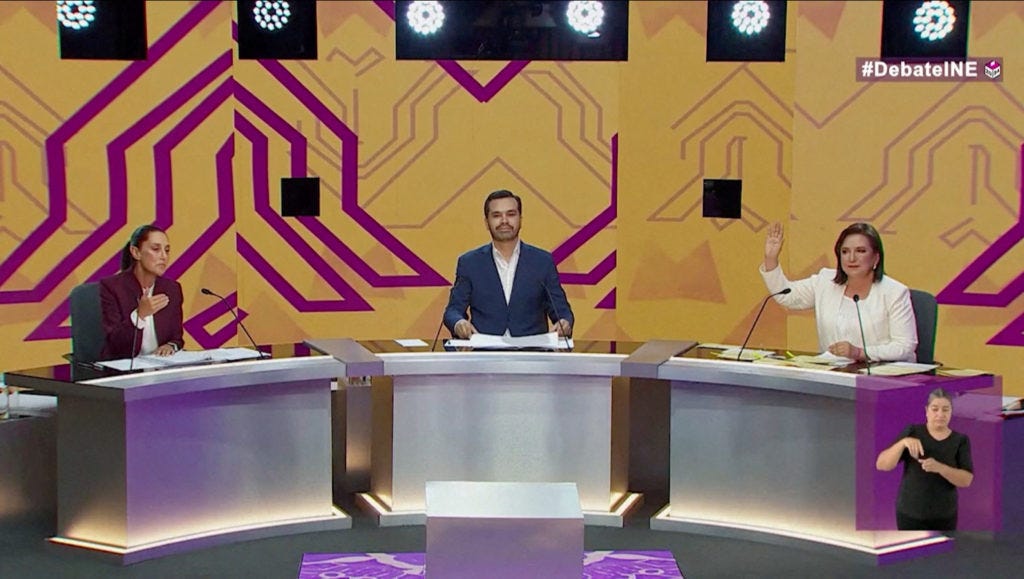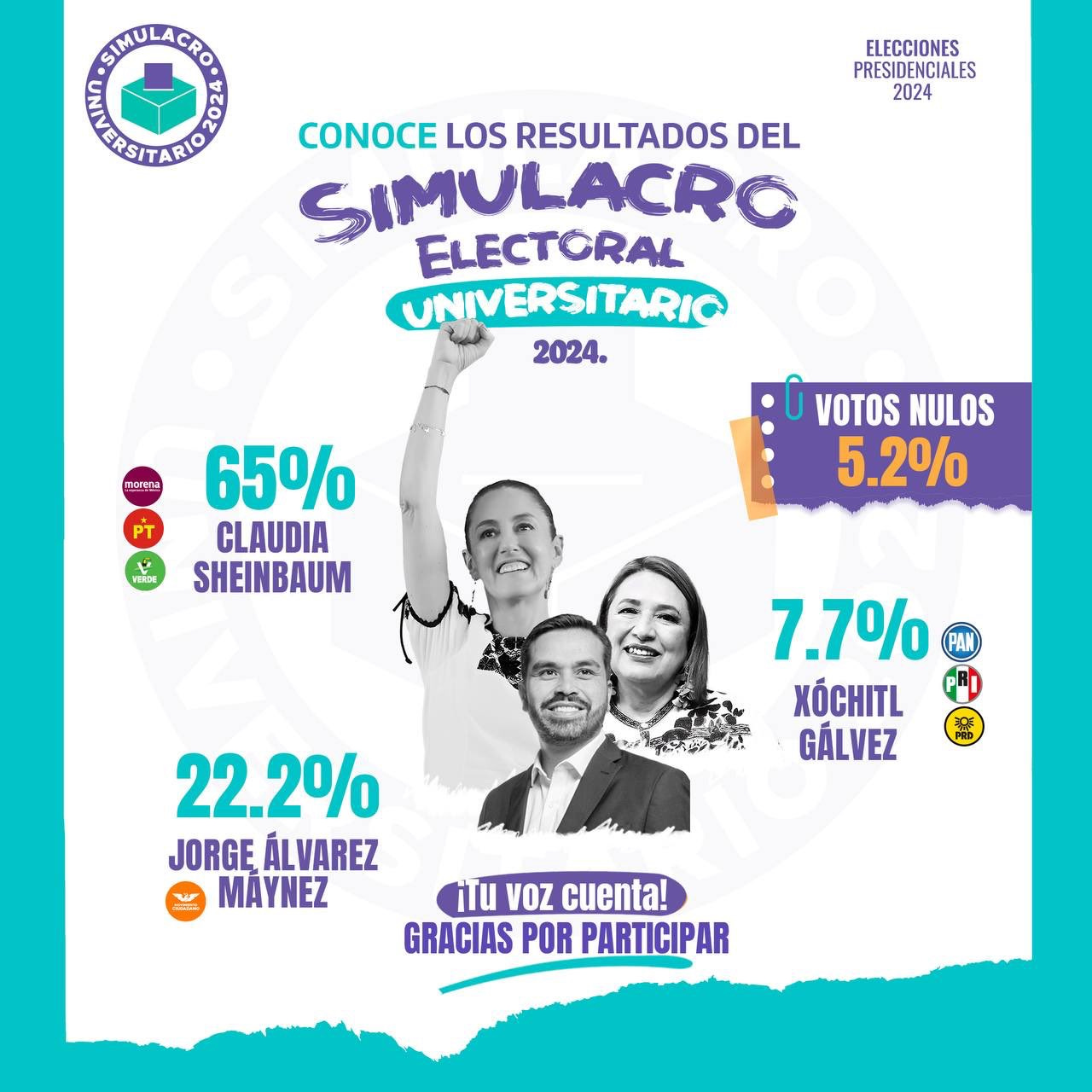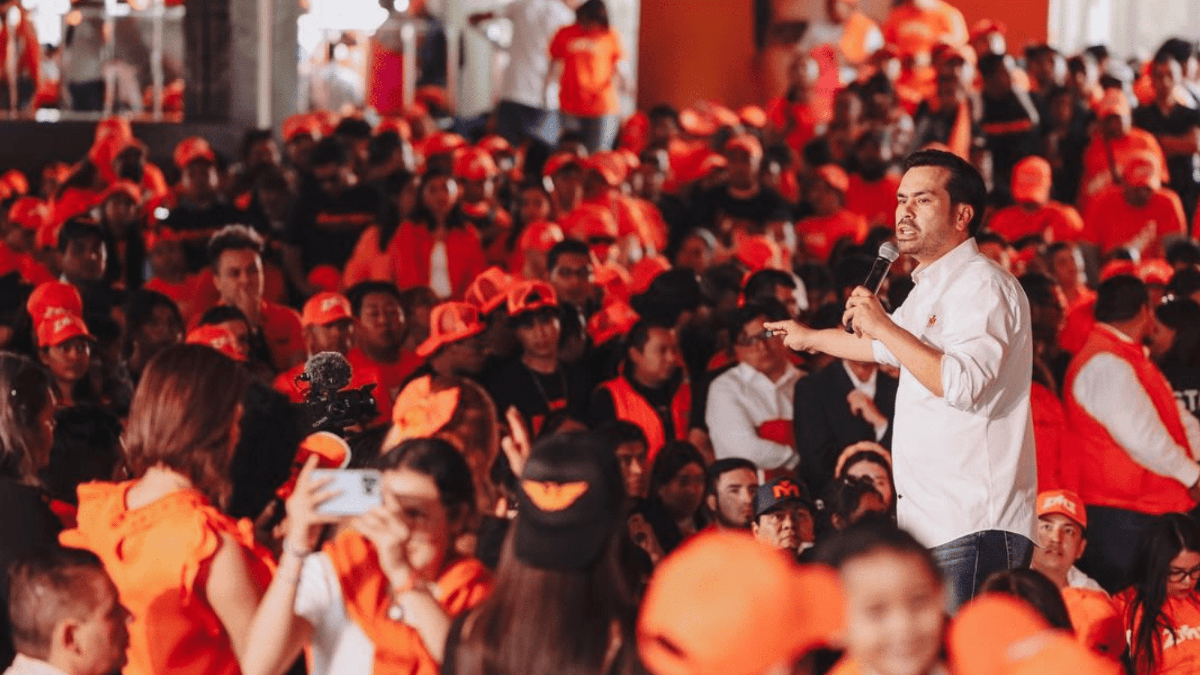Movimiento Ciudadano: The Underdog of Mexico’s 2024 Presidential Election?
Máynez may not outright win the election, but the popular support he’s drummed up and the controversy he’s stirred up within Mexico’s political circles are significant feats in and of themselves.
This piece was originally published here by the Wilson Center’s Mexico Institute 2024 Elections Guide.
Polling data for Mexico’s upcoming June 2nd presidential election consistently show the Morena candidate, Claudia Sheinbaum in the lead, the opposition candidate, Xóchitl Gálvez, in second place, and trailing behind, usually with less than 10% of vote, the Movimiento Ciudadano candidate, Jorge Álvarez Máynez. However, upon closer examination of two specific demographics, the “youth vote” (18-34 years old) and voters in states where Movimiento Ciudadano has a stronghold, a different picture emerges.
Movimiento Ciudadano hasn’t yet gained a significant stronghold in central Mexico, but it has in the states of Nuevo León and Jalisco, where the party holds two governorships. National surveys reveal Máynez’s popularity substantially below that of his competitors, but a survey conducted in Guadalajara (the capital of Jalisco) of 50 respondents (almost 70% of whom were between the ages of 18 and 34) showed otherwise. [1] The survey found that 34% of respondents plan to vote for Máynez, 32% for Sheinbaum, and only 14% for Gálvez. 68% plan to vote for the Movimiento Ciudadano candidate for governor, Pablo Lemus. 84% of survey respondents said they utilize social media as their primary source for information about the elections and candidates, with 36% preferring Facebook and another 20% preferring TikTok. While this survey is a sampling of a small percentage of Jalisco’s voting population, it paints a different picture than what the national surveys show.
Along these lines, but specifically focusing on the younger demographic of voters is the Simulacro Nacional, or the national election simulation. Last week, over a quarter of a million university students from more than 400 different universities and campuses across Mexico participated in these mock elections and Claudia Sheinbaum won with 63.5% of the vote, followed by Jorge Álvarez Máynez with 23.1% of the vote, and Xóchitl Gálvez with 8.5%. Among this population of young voters, Sheinbaum’s lead is undeniably strong, and at the same time, Máynez’s performance should be recognized and his party’s efforts to capture this vote applauded.
Yes, Maynez’s popularity in national surveys pales in comparison to that of his competitors, but these exercises reveal that Movimiento Ciudadano is a force to be reckoned with – and one that might impact the trajectory of Mexican politics, particularly for the next presidential cycle.
Máynez’s performance should be studied, rather than criticized at this juncture. Though he has polled substantially below his competitors in national polls, he only just arrived on the national political scene in January of this year when he was named the Movimiento Ciudadano presidential candidate, just weeks after the original candidate, current Movimiento Ciudadano governor of Nuevo León, Samuel García, abruptly dropped out of the race. Of note, the party has faced significant internal conflict regarding the decision not to ally with the opposition for the 2024 elections. [2]
Movimiento Ciudadano has taken a page of Morena’s playbook – courting a specific sector of the voting population that has historically been overlooked – millennials – and made it the party’s primary audience.
Unlike his baby boomer competitors, Máynez is a millennial and his campaign reflects as such, both in terms of the platform and PR strategy. In conjunction with traditional campaign promises of improving the security situation in Mexico, bolstering the economy, and addressing corruption, Máynez’s platform also includes mention of ensuring affordable housing (with a specific focus on younger generations), reforms to Mexico’s pension plans, and even the legalization of certain drugs. Unlike his competitors who host traditional “mítines” to stump and meet potential voters, Máynez has taken a different approach, hosting campaign events at universities around the country.
The party also knows the power of social media (largely in part thanks to the Monterrey Movimiento Ciudadano mayoral candidate and First Lady of Nuevo León, Mariana Rodríguez) and has wielded it wisely to connect with voters. Máynez lags behind in the polls, but the numbers on social media tell a different story. Following the April debate, the number of followers Máynez has on Facebook and TikTok surpassed those of Gálvez.
While social media following doesn’t translate to voter turnout at the polls, in an increasingly ever-connected world, it does indicate popular support – and a captive audience, ready for the next electoral cycle.
It seems that Movimiento Ciudadano is in its “building season,” not necessarily expecting full-blown success in this election, but rather, strategically plotting and planning for the chapter ahead – the 2030 presidential election. However, the significance and impact of Movimiento Ciudadano’s participation in this presidential election cannot be overlooked.
One, in the short term, Movimiento Ciudadano’s participation splits the vote, taking away votes from the other two candidates, predominantly impacting the opposition. In fact, just this week (less than three weeks away from Election Day), Luis Donaldo Colosio[3] suggested that Máynez withdraw from the race, so that would-be Máynez voters instead vote for the opposition candidate, thus increasing the odds of Morena’s loss come election day. Alejandro Moreno, the PRI party president, encouraged this proposal, promising that if Máynez withdraws from the race, Moreno, in exchange, will relinquish his title as party president to Máynez. This must occur ahead of the third and final presidential debate on May 19th. Máynez, for his part, has reaffirmed his commitment to participating in the race and has called Moreno’s proposal a desperate act. Will Movimiento Ciudadano eventually cede and collaborate with the opposition to defeat the current ruling party? Or, does this set up an eventual alliance or commitment to collaborate between Movimiento Ciudadano and Morena, should Morena win the election? Or, the third, and most likely option, will Movimiento Ciudadano continue operating alone?
Second, Movimiento Ciudadano’s public relations, voter courting strategy is a long-term game and the party is both building up and out its rolodex. How likely are these young voters, fueled by the momentum that Movimiento Ciudadano has garnered over the past year, likely to ride the wave into the next presidential election? Those between the ages of 18 to 34 years old constitute 37% of Mexico’s eligible voting population, according to the INE. For comparison, voters who are 65 and older only represent 13%.

Only time will tell what becomes of Movimiento Ciudadano. Perhaps we’re seeing the emergence of a new type of politics in Mexico, or at least a party that skews more toward courting younger voters as compared to the party politics of the past that focused on promoting and upholding the status quo. Or, maybe we’re witnessing the emergence of a new political class in Mexico, the politician pseudo influencer, who in the case of Movimiento Ciudadano, is identified by their neon orange attire, use of the term fosfo fosfo, and above all, strategic use of social media. Máynez may not outright win the election, but the popular support he’s drummed up, particularly among millennial voters, and the controversy he’s stirred up within Mexico’s political circles are significant accomplishments in and of themselves.
[1] Special thanks to Lic. Jesús Alejandro Gómez Ledezma for conducting the surveys and sharing the data.
[2] As a result, key figures within the party ranks, such as Jalisco’s Movimiento Ciudadano governor, Enrique Alfaro, have decided to step away from the party.
[3] The current mayor of Monterrey, MC candidate for the Senate, and son of the late Luis Donaldo Colosio, the PRI presidential candidate who was murdered at a campaign rally in Tijuana in 1994.






